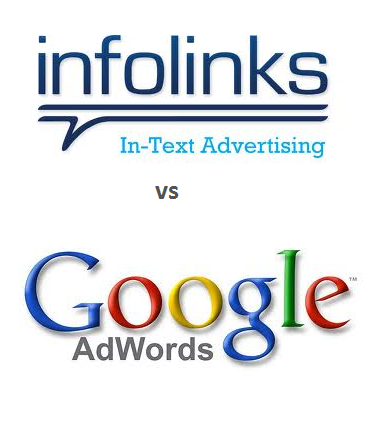The first revolution in online advertising appeared back in 2000 as Google AdWords/Adsense as pay per click advertising. Several years later produced the second online sensation in advertising being in-text advertising. Although this didn’t produce as much 
In-Text Advertising Explained
In-text advertising works by turning random words in an article into links to advertiser’s landing pages. It is contextual because the words that are highlighted will be somehow linked to the advertiser’s landing page. The general stereotype in-text advertising, especially Infolinks, is that the CPC is extremely low. When I say low, the maximum CPC you will see is around 15 cent compared to Google AdWords that have CPCs at tens of dollars. From this, you can make two assumptions to Infolinks:
- You will get a lot of traffic for not much money.
- How ‘healthy’ is the traffic?
A reason CPC will rise is because again, of two reasons:
- There are lots of advertisers bidding for the same keywords. Therefore, with the saying ‘supply and demand’, demand (for keywords) has increased for the same supply (of websites to advertise on).
- The traffic from the keywords used has an extremely high conversion rate. If the traffic is ‘healthier’ where there is more chance of a conversion, advertisers will be more willing to pay a lot more for individual clicks.
For this reason, it can be seen that the traffic Infolinks produces is not ‘healthy’ because advertisers are not willing to pay above tens of cents for clicks. The problem stems down with in-text advertising’s way of getting the traffic. Infolinks say they are contextual which they are. They link to words related to the advertiser’s campaign. However, it doesn’t mean the adverts are contextual to the whole of the content. With Adsense, Google analyses ALL of the content on the page and produces adverts that are related to the content in general.Whereas, Infolinks does not take into consideration the whole content but individual words. Let’s take an example applying PPC and in-text advertising to both:
Usain Bolt in the London 2012 Olympics managed to retain three golds in 100m, 200m and the 100m relay while producing one Olympic record and world record. Some speculate he is looking for a new challenge possibly in 400m or long jump.
There is a short paragraph about the London 2012 Olympics and Usain Bolt the Jamaican sprinter. Let’s take this as our content. If PPC was applied to this paragraph, it would analyse every word of the content and gain a good idea about what it is about. Therefore, the adverts will be related to sport, athletics and the Olympics. Whereas, if it was Infolinks and in-text advertising, there will be links on just ‘London’ which if hovered will say ‘Fancy visiting London? Click here’ and ‘golds’ that will say when hovered ‘Short on cash? Sell your gold and earn!’ I hope this gives you an idea about the differences between Infolinks and PPC.
From this, I do feel Infolinks cannot be a competitor to PPC. The traffic is just not related enough because the way in-text advertising gets the traffic is the wrong way. It is contextual, but only for specific words. For best success, in-text advertising needs to be contextual to individual words and the whole content.




